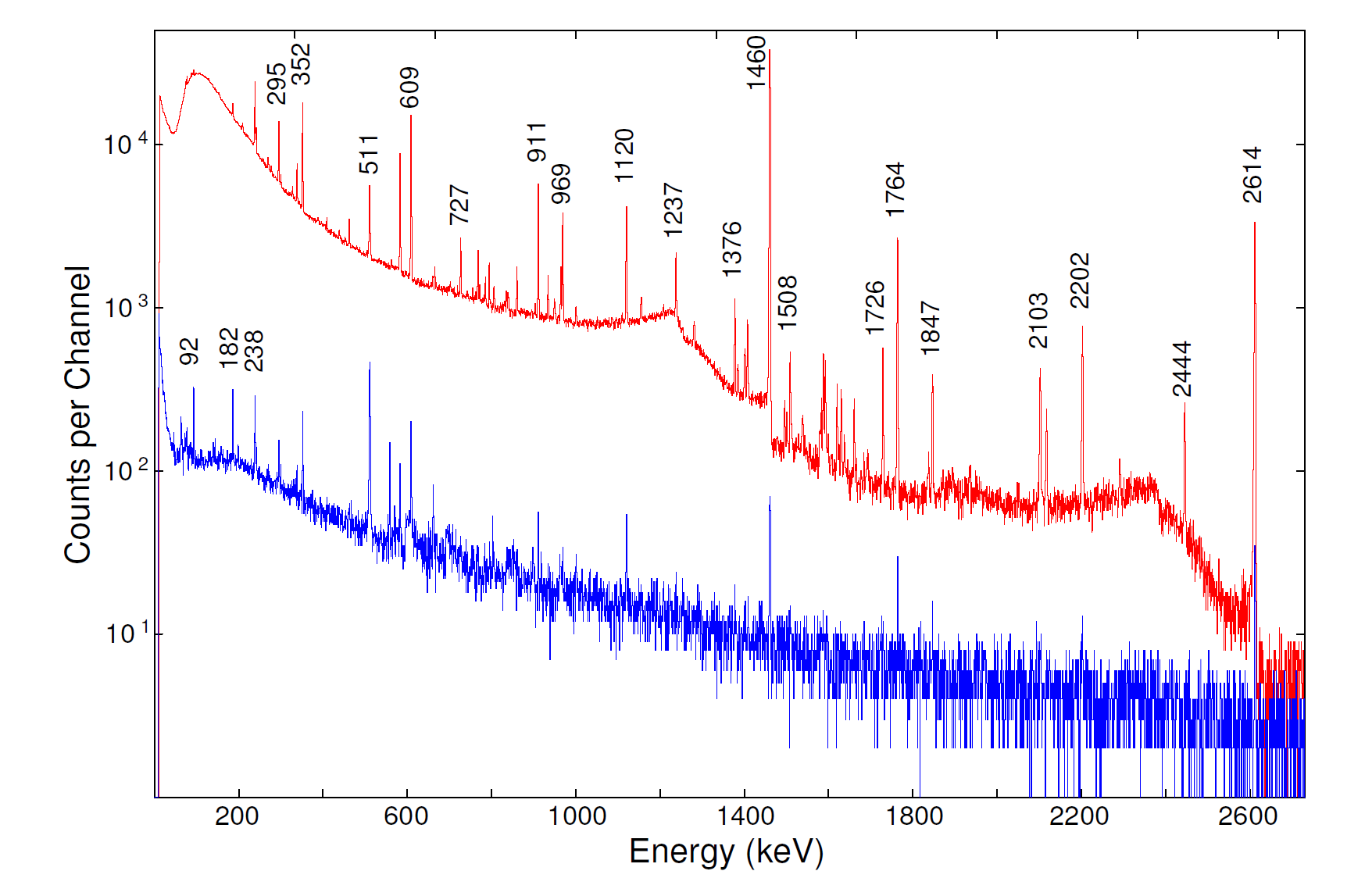The GEARS Detector
The detector used in GEARS is an ORTEC p-type GEM Profile Series HPGe coaxial gamma ray detector, which was initially designed to be used with an ORTEC DSPEC DAQ system over the ORTEC SMART-1 interface. The downside to the DSPEC DAQ is its inability to record timing information, and therefore it was replaced (using an ORTEC DIM-POSGE interface) with a CAMAC system that allows for custom hardware configurations to be implemented with relative ease. In doing so, performing time-resolved gamma ray spectroscopy, such as observing the decay of a sample over time, is now possible.
Note: A series of Nuclear Instrumentation Modules (NIM modules) are also required to run the detector in this configuration, details can be found in the Signal Derivation and Trigger pages.
Supporting Systems for Detector Operation
The GEARS detector requires a set of supporting systems in order to operate, these are listed below with brief explanations of each:
- DAQ: As outlined above, a CAMAC DAQ is required to read the signals produced by the detector and digitize them to be saved to disk for subsequent data analysis.
- High Voltage: An HPGe detector requires a high voltage bias to generate a measurable signal when a gamma ray strikes the HPGe crystal. In the most basic terms, a signal is generated when a gamma ray interacts with the HPGe crystal, producing electron-hole pairs. Under the influence of the electric field supplied by the high voltage bias, the electrons and holes travel across the crystal to their respective electrodes, thus creating a small current. GEARS in particular uses a high voltage bias of +3700 V.
- Liquid Nitrogen: Liquid nitrogen is used to cool the HPGe crystal to 77 K and remove any electrons from the conduction band. At room temperatures, electrons can be thermally excited to the conduction band which results in a tremendous amount of electrical noise (known as leakage current) and renders the detector unusable.
- Preamplifier: The preamplifier converts the detector current pulses into a measurable voltage signal that can be read out by the DAQ. The proximity between the preamplifier and the HPGe crystal as well as proper electromagnetic shielding for the preamplifier and its input connections are absolutely critical for signal integrity. For this reason, the preamplifier is built into the ORTEC GEM detector assembly and requires only an external +/-12 V supply to operate.
Electrical Connections
Listed below are the 5 electrical connections used to operate the detector over the DIM-POSGE interface:
- +/-12 V Preamp power: Delivered from an ORTEC 671 Amplifier over a DB9 connection (See the Signal Derivation page for the function of the ORTEC 671).
- High Voltage Input: Delivered from an ORTEC 660 Dual Bias Supply over an SHV cable, +3700 V.
- Bias Shutdown: A bias shutdown signal is constantly monitored by the high voltage supply over a BNC cable. If, for whatever reason, the cooling on the detector fails and it begins to warm up, the high voltage is shut off to prevent damage to detector's electronics.
- Signal Output: A BNC connection that carries the signals generated by the preamplifier, used for triggering purposes.
- Secondary Signal Output: An identical duplicate signal output from the preamplifier (See the Signal Derivation page for details).
Shielding
The GEARS detector relies on passive shielding to reduce interference from background radiation. The outermost layer consists of low-activity lead bricks housed in a steel frame, where the top of the frame is mounted on rollers to allow access to the detector. Mounted within this “lead box” sits a Cu/Cd shield that surrounds the detector cryostat, which itself is made from aluminum. This combination of shielding achieves an ~100x reduction in overall background, which can be seen in (Figure 1)
